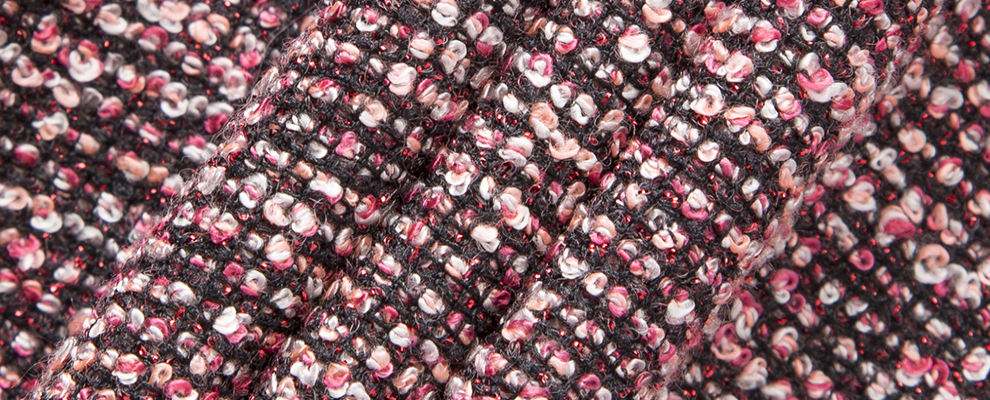The difference between knitted fabric and woven fabric
Knitted fabrics and woven fabrics have different weaving methods, processing techniques, fabric structures, fabric characteristics, and finished product uses, all of which have their own common characteristics. Here are some comparisons.
(1) Composition of fabric organization:
(A) Knitted fabric: It is a fabric composed of yarns that are sequentially twisted into loops, and the loops are strung together to form the fabric. The process of yarns forming loops can be done horizontally or vertically, and horizontal weaving is called weft weaving, while vertical weaving is called warp weaving.
(B) Woven fabric: It is a fabric made up of two or more sets of perpendicular yarns that are interlaced at a 90 degree angle. The longitudinal yarns are called warp yarns, and the transverse yarns are called weft yarns.
(2) The fundamental unit of fabric organization:
(A) Knitted fabric: The loop is the smallest fundamental unit of knitted fabric, and the loop is composed of a loop stem and an extension line forming a spatial curve.
(B) Woven fabric: Each intersection point between warp and weft yarns is called a weave point and is the smallest fundamental unit of woven fabric.
(3) Fabric weave characteristics:
(A) Knitted fabric: Because the loops are formed by twisting yarns in space, and each loop is composed of a single yarn, when the knitted fabric is subjected to external tension, such as longitudinal tension, the twists and turns of the loops change, and the height of the loops also increases, while the width of the loops decreases. If the tension is transverse tension, the situation is the opposite. The height and width of the loops can obviously be converted into each other under different tension conditions, so the extensibility of knitted fabric is high.

(B) Woven fabric: Due to the twists and turns of the warp and weft yarns at the intersection, and the twists and turns in the direction perpendicular to the fabric plane, the degree of twists and turns is related to the tension between the warp and weft yarns, as well as the stiffness of the yarns. When the woven fabric is subjected to external tension, such as longitudinal stretching, the tension of the warp yarns increases, and the twists and turns decrease, while the twists and turns of the weft yarns increase, such as continuous longitudinal stretching, until the warp yarns completely straighten and stop, resulting in a transverse shortening of the fabric. When the woven fabric is subjected to external tension and stretched horizontally, the tension of the weft yarn increases while the warp yarn twists and turns, and the warp yarn twists and turns, continuously stretching horizontally until the weft yarn is completely straightened and stops, resulting in a longitudinal shortening of the fabric. However, warp and weft yarns do not undergo transformation, unlike knitted fabrics.
(4) Characteristics of fabric organization:
(A) Knitted fabric: It can extend in all directions and has good elasticity. As knitted fabric is composed of perforated coils, it has great breathability and a soft touch.
(B) Woven fabric: Due to the fact that the warp and weft yarns of woven fabric have little relationship with each other and do not undergo transformation, the fabric is generally tight and stiff.
(5) Physical and mechanical properties of fabric organization:
(A) Knitted fabric: The physical and mechanical properties of a fabric, including longitudinal and transverse density, square meter weight, elongation, elasticity, fracture strength, wear resistance, curling, thickness, delamination, shortening, covering, and bulk density.
(B) Woven fabric: The physical and mechanical properties of woven fabric, including yarn density of warp and weft yarns, fabric edge, front and back alignment, warp and weft direction, and fabric coverage.
Article source: Fancy Thread Manufacturer
-
05-27
The reason why fabrics containing spandex are prone to yellowing
Spandex is a commonly used fiber variety in our daily lives, characterized by good elasticity, low fineness, high elastic modulus (cracking elongation can reach 400-800), and low specific gravity. Spa
-
04-24
Colored non dyed nylon with synthetic fiber raw material
The current conventional fiber coloring mostly uses yarn dyeing method, which has long process, high loss, high cost, and the product has color difference and low color wash fastness. Yarn is prone to
-
03-26
What are the characteristics of non dyed spandex?
Non dyed spandex has also been widely used in recent years. Non dyed spandex fiber can be blended with fibers such as nylon, polyester, acrylic, cotton, wool, etc., which can give fabrics excellent el
-
02-24
The influence of yarn structure on fabrics
The basic characteristics of yarn include its appearance and shape, twisting characteristics, fiber transfer and distribution characteristics in the yarn, as well as the surface fuzz and internal loos
